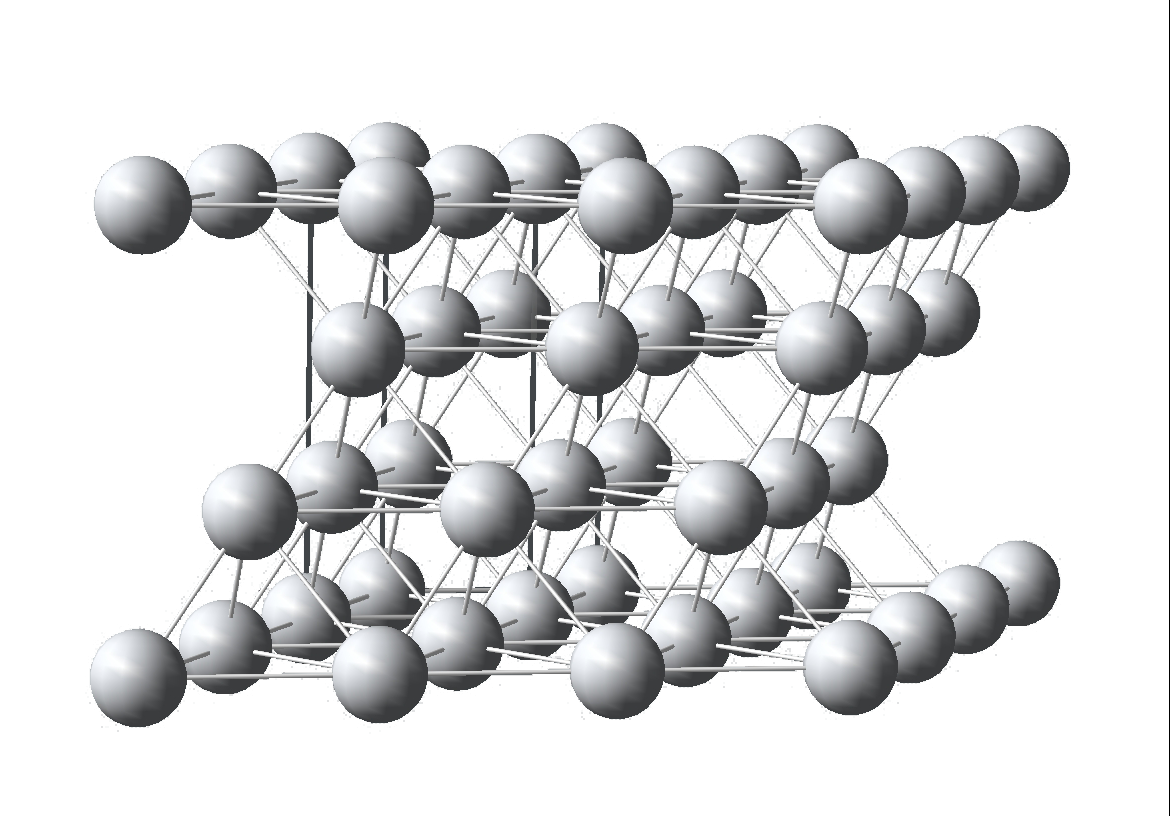


 A solid consists of a very large number of atoms regularly piled up and forming a repetitive pattern, kind of like kitchen tiles or a Rubik’s cube. Each atom is composed of a nucleus surrounded with several electrons.
A solid consists of a very large number of atoms regularly piled up and forming a repetitive pattern, kind of like kitchen tiles or a Rubik’s cube. Each atom is composed of a nucleus surrounded with several electrons.
The main difference between an insulating material and a metal is that in a metal, the atoms enable one or several of their electrons to move freely.
You could imagine that a metal is some kind of huge pinball game where small electrons move between gigantic atoms and bounce off them. However, quantum physics taught us in the 20th century that this image is not a good analogy.
 Indeed, at the subatomic scale (we are talking in billionths of a metre), all particles follow the rules of quantum physics, which means they are both a particle and a wave.
Indeed, at the subatomic scale (we are talking in billionths of a metre), all particles follow the rules of quantum physics, which means they are both a particle and a wave.
In the case of an electron: it is, at the same time, an electrically charged tiny ball and a wave spreading through space, kind of like a wave in the sea.
This wave adapts to the regular pattern formed by the atoms and adopts a profile which has the same period as the atom pattern. This is what we call a Bloch wave. It enables the electron to move without being impeded by the atoms, even if the latter take a lot of space and almost touch one another.
